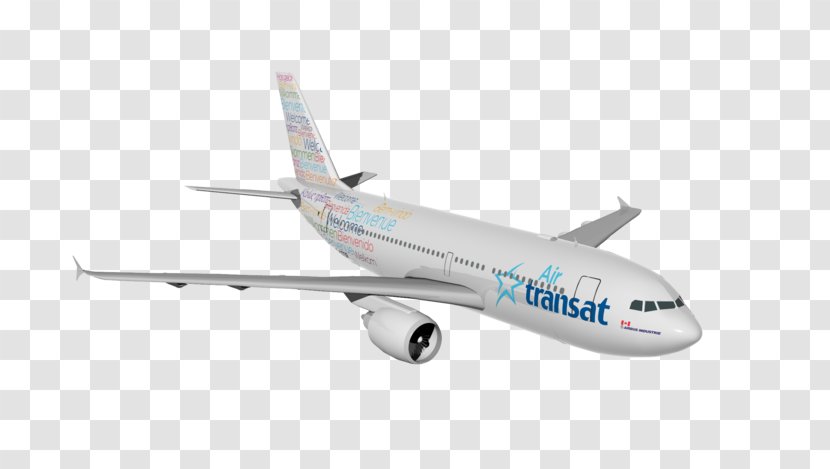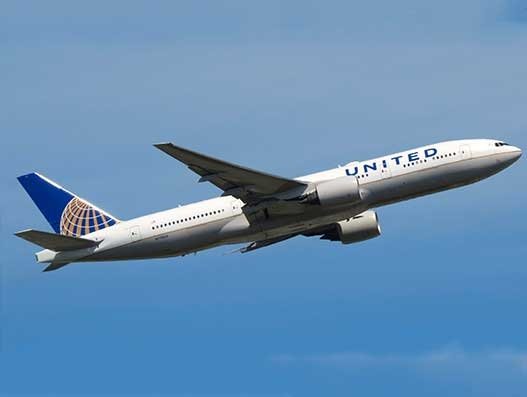Boeing 777 787
Boeing 787-10 vs. Boeing 777-200ER
| Boeing 787-10 | versus | Boeing 777-200ER | ||
|---|---|---|---|---|
| 68.27 m | 224 ft | length | 63.70 m | 209 ft |
| 60.17 m | 197 ft 5 in | wingspan | 60.90 m | 199 ft 10 in |
| 347.00 m2 | 3,735 ft2 | wingarea | 427.80 m2 | 4,605 ft2 |
| 17.00 m | 55 ft 9 in | height | 18.50 m | 60 ft 8 in |
| 2 | engines | 2 | ||
| 338 kN | 76,000 lbf | thrust per engine | 417 kN | 93,700 lbf |
| 676 kN | 152,000 lbf | total thrust | 834 kN | 187,400 lbf |
| 252,651 kgs | 557,000 lbs | MTOW | 297,560 kgs | 656,000 lbs |
| 13,001 km | 7,021 nm | range | 14,316 km | 7,731 nm |
| M0.85 | cruise speed | M0.84 | ||
| 323 passengers | capacity | 301 passengers | ||
How to Tell Boeing Jetliners Apart
But the 787-9 Dreamliner is a smaller plane than the 777-300ER, and arguably not much of an upgrade for the bulk of passengers who travel in economy class. On both the British Airways 777-300ER and 787-9 Dreamliner, the economy class seat configuration is 3-3-3. Seat pitch on both aircraft types is 31″, and the seat width is 17.5″. 17 hours ago MIAMI – Emirates Airlines (EK) is considering switching between 30 to 40 of its Boeing 777x orders for those of the smaller Boeing 787 Dreamliner. This is more than a third of the airline’s initial 777x order. Though COVID-19 has had a massive impact on the demand for twin-aisle aircraft, EK had previously swapped 777X orders for the Dreamliner before the pandemic even began.
| Boeing Commercial Aircraft | |
| Wide-Body | Narrow-Body |
| Boeing 707 | |
| Boeing 717 | |
| Boeing 757 | |
One can spot a Boeing jet airliner in nearly any airport in the world.
They share similar external characteristics, but identifying one from another can be difficult.
Included on this page is a quick and easy guide to spotting the Boeing jetliners in use today by looking at details such as engine placement, tail design and landing gear configuration.
The success of the 707 in the 1960s made Boeing the early leader in commercial airliners, and led to a popular 7x7 family of jetliners introduced over the years: the 717, 727, 737, 747, 757, 767, 777, and the 787 Dreamliner.

And the tradition continues ... in June of 2017 Boeing announced at the Paris Air Show its newest airliner, the NMA, probably to be called the 797.
Let's get started ...
Boeing 707
The 4-engine Boeing 707 |

Boeing 717
Boeing 717 with its twin-engines mounted on the aft of the fuselage |
Boeing 727
The 727 is powered by three Pratt & Whitney JT8D engines below the T-tail, one on each side of the rear fuselage with a center engine that connects through an S-duct to an inlet at the base of the fin. The front of the fuselage features the classic 'Boeing pointed nose' and V-shaped windshields on each side of the cockpit. These features can be seen in the Boeing 727-200 of Delta Air Lines shown below. |
Boeing 777 787 Pantip
Boeing 737
The Boeing 737 has two engines, a main landing gear consisting of two sets of two wheels, and a triangular section at the front of the tail. The nose is 'pointed'. Originally nicknamed the 'Baby Boeing', it has grown over the decades in size and remains a popular airliner worldwide. |
Boeing 747: The Original Jumbo Jet

The Boeing 747 with its four engines, one full passenger deck the length of the fuselage, and bulbous front fuselage is an easy spot. Shown below is a Boeing 747-400 of British Airways. |
Boeing 757
In this photograph, the dominant dolphin-shaped nose of the narrow-body, single-aisle Boeing 757 can be seen on this American Airlines airliner. Note also the classic Boeing 'V-shaped' windshield windows. |


Boeing 767
Boeing 767-200, 767-300, and 767-400 wide-body, twin-jet. |
Boeing 777
The twin-engine, wide-body Boeing 777-200 (top) and Boeing 777-300 (below). Note that the 777-200 has four cabin doors while the 777-300 has five cabin doors. Also, the 777 is the only airliner currently in operation that has two, 6-wheel main landing gear configurations. It also features a flat APU exhaust at the rear of the fuselage. |
Boeing 787
Shown below is a side-by-side comparison of the Boeing 787-8 (top), 787-9 (middle) and Boeing 787-10 (below) The Dreamliner's distinguishing features include one engine under each wing, swept wings with no winglets, two 4-wheel main landing gear, a sleek pointed nose, and noise-reducing chevrons on its engine nacelles. Also, the 787 does not have winglets or sharklets, which are used on the similar shaped Airbus A350. |
| American Airlines Boeing airliners awaiting takeoff at the DFW International Airport (L to R) Boeing 777, Boeing 787 and Boeing 737 (June, 2019) |
The Boeing 797 / NMA Announced at 2017 Paris Air Show
At the Paris Air Show in June of 2017, Boeing officials offered preliminary plans for the development of a totally new 'Middle of the Market' or 'MOM' airliner, tentatively scheduled for availability in 2025.
Media outlets are already calling this narrow body, dual-aisle airliner the Boeing 797, which would feature a composite fuselage and wings.
Boeing's current official name for the project is New Midsize Aircraft (NMA). The NMA would have a capacity for 220 to 270 passengers and a range of 5,200 nautical miles, filling the gap between the 737 MAX and the 787 Dreamliner.
Boeing 777 Vs 787 Range
Boeing Airline Customer Codes
The Boeing Company uses a series of 2-character Airline Customer Codes to identify the original-build customer for all Boeing 7x7 aircraft, up to and including the Boeing 777. The code system is not used on the 787 and the 737Max.
One example would be Emirates Boeing 777-31H. This is a 777-300 series aircraft originally built for Emirates, Boeing Airline Customer Code 1H.
Included below is a table of the Boeing customer codes used for some larger and popular world airlines.
| Boeing Customer Code | Airline | Boeing Customer Code | Airline |
| 06 | KLM | 82 | TAP |
| 09 | China Airlines | 83 | SAS |
| 22 | United | 90 | Alaska Air |
| 23 | American Airlines | 91 | Frontier |
| 24 | Continental Airlines | 1B | China Southern |
| 28 | Air France | 1H | Emirates |
| 30 | Lufthansa and Condor | 1R | Virgin Atlantic |
| 31 | Trans World Airlines | 2A | Hawaiian Airlines |
| 32 | Delta Airlines | 2W | TAM /LATAM |
| 33 | Air Canada | 3V | EasyJet |
| 36 | British Airways | 4A | United Parcel Service (UPS) |
| 38 | Qantas | 8E | Asiana Airlines |
| 46 | Japan Air Lines | 9L | Air China |
| 47 | Western Airlines | AS | Ryan Air |
| 51 | Northwest | B5 | Korean Air |
| 52 | Aeromexico | B7 | US Airways |
| 56 | Iberia | BT | Lufthansa Cargo |
| 57 | Swiss Air | DZ | Qatar Airways |
| 58 | ElAl | F6 | Philippine Airlines |
| 59 | Avianca | FX | Ethiad Airways |
| 60 | Ethiopian Airlines | GP | Lion |
| 67 | Cathay Pacific | H4 | Southwest |
| 68 | Saudia | H6 | Malaysia Airlines |
| 69 | Kuwait Airways | J6 | Air China |
| 81 | All Nippon Airways | S2 | FedEx |
Boeing 727 at the Museum of FlightShown to the right is Boeing 727-223, N874AA in American Airlines livery, on display at the Museum of Flight, Seattle, Washington. This airliner was delivered to American Airlines (Boeing Customer Code 23) in April of 1978. (Staff Photo) |
Boeing Airliner Operations at Night
While spotting airliners during the day can sometimes be difficult, nighttime air operations make the process even harder.
One way to identify Boeing airliners at night is by examining the pattern of the white light at the tip of the wing, known as the strobe.
Boeing wing strobe lights flash only once, while Airbus airliners flash twice in rapid succession.